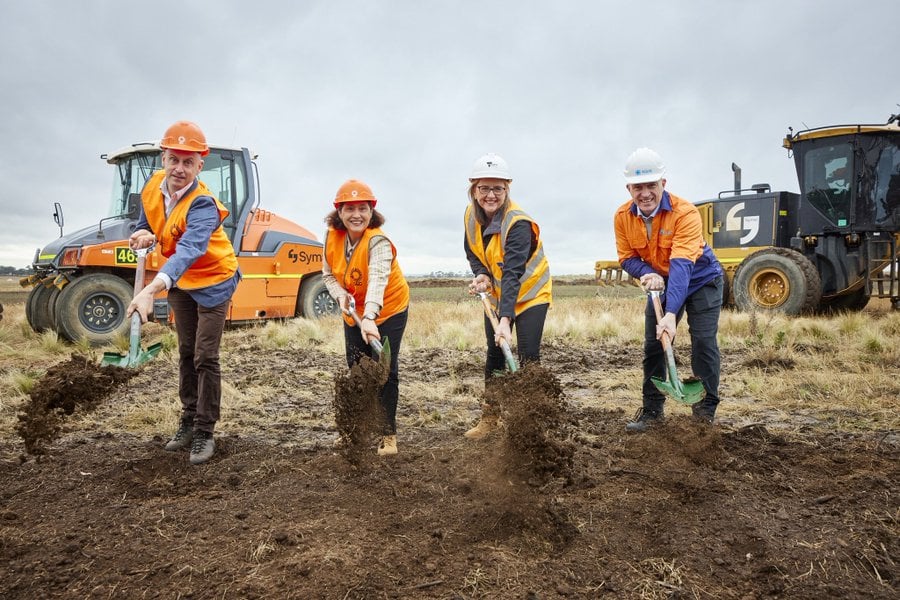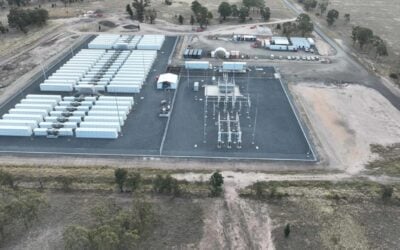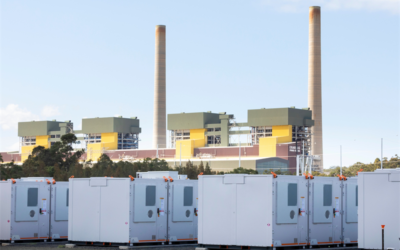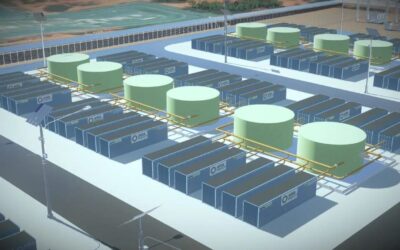
Work has begun on a 600MW/1,600MWh battery storage project by the State Electricity Commission (SEC), an entity owned by the Australian state of Victoria.
The AU$1 billion (US$660 million) battery project, which comprises three separate systems and called the Melbourne Renewable Energy Hub (MREH), represents the first SEC investment on behalf of the state into 4.5GW of clean energy resources.
The SEC has been tasked by the state government to direct investment into renewables and storage. It began as Victoria’s main energy supplier in the early part of the 20th Century. After privatisation in the 1990s, it was taken back into public ownership last year by former state Premier Daniel Andrews and given its new remit.
The hub is being developed by SEC in partnership with Equis Australia, local subsidiary of one of the Asia-Pacific region’s largest private renewables investors. SEC’s financial backing of the hub amounts to AU$245 million and its construction will create up to 155 jobs, the commission said yesterday (29 November).
Try Premium for just $1
- Full premium access for the first month at only $1
- Converts to an annual rate after 30 days unless cancelled
- Cancel anytime during the trial period
Premium Benefits
- Expert industry analysis and interviews
- Digital access to PV Tech Power journal
- Exclusive event discounts
Or get the full Premium subscription right away
Or continue reading this article for free
Singapore-headquartered Equis received Commonwealth government approval for MREH in October, although as reported by Energy-Storage.news at the time, its output and capacity were given at 1.2GW/2.4GWh in approvals granted by Minister for the Environment and Water, Tanya Plibersek.
Ground was ceremonially broken on the project yesterday by current Victoria Premier Jacinta Allen of the Labor Party and energy minister and minister for the SEC, Lily d’Ambrosio.
Allen said that investment in critical energy projects of this type would put downward pressure on household energy costs, helping provide “cheaper and more reliable renewable energy across the state”.
Minister d’Ambrosio meanwhile noted the BESS development marked, “a huge step forward in increasing Victoria’s renewable storage capacity – which is critical to meeting our nation leading targets of 95% renewable energy generation by 2035”.
It will also make a big contribution to Victoria’s state energy storage deployment target committed to by Labor in late 2022, which is for at least 2.6GW of storage by 2030 and 6.3GW by 2035 – one of the biggest targets of its type anywhere in the world.
For context, the two biggest targets set by states in the US are New York’s 6GW by 2030 and Virginia’s 3.1GW by 20235.
Quick-take analysis: Public and private investments alike for BESS
Equis’ Energy Infrastructure Australia development arm lists Melbourne Renewable Energy Hub and three other large-scale BESS projects in its development portfolio.
They are: the 300MW/1,200MWh Calala Battery Energy Storage System (BESS) in New South Wales, 200MW/800MWh Koolunga BESS in South Australia and Lower Wonga BESS in Queensland, which is also 200MW/800MWh. However, the other three projects are at the proposals stage of their development.
Equis managing director David Russell said the project “would not be going ahead at this scale and capacity today,” without the partnership between his company and the Victorian state-owned SEC.
It’s interesting to note that Australia’s large-scale battery sector, booming while the country’s solar PV and wind equivalents, is increasingly seeing private sector interest after a period in which state or Commonwealth backing has been its primary driver.
The Premier’s office said that it received expressions of interest from parties presenting more than 30GW of energy storage capacity in soliciting bids for its first investment, alongside bids for 24GW of renewable energy projects.
According to new figures from the national Clean Energy Council (CEC) trade association, Australia’s pipeline of new energy storage projects in development stands at more than 40GW and more than AU$1 billion of financial commitments were made to a mix of standalone and hybrid BESS projects during Q2 2023 alone.
This comes amid what CEC called a difficult period for solar and wind, although both the renewables and storage industries will be looking ahead to the shot in the arm expected to come from the launch of Australia’s expanded Capacity Investment Scheme (CIS).
The CIS last week began rolling out its first 32GW of competitive tenders through a contracts for difference (CfD) scheme which will underwrite revenues for firm renewable capacity – initially comprising 23GW of renewables and 9GW of energy storage.
Notably, while the scheme had been expected to be a boost to kick off storage development about a year-and-a-half ago when the idea was first floated, storage is now able to earn enough money from the spot market for private investors to already be comfortable with the associated merchant risk.
Within the National Electricity Market (NEM), which covers most of Australia’s state interconnected electricity grids, storage can compete with the marginal price of gas, where solar and wind struggle due to their variable nature, Professor Bruce Mountain of the Victoria Energy Policy Centre (VEPC) told Energy-Storage.news a few days ago.
One hint of that can be seen in that shortly before the SEC announcement yesterday out of Victoria, the state’s Department of Transport and Planning handed a ministerial permit to approve a new proposed 200MW/800MWh BESS project by developer Akaysha Energy.
According to documents submitted to state planners, the proposed Elaine BESS project would require between AU$400 million and AU$500 million investment and would connect to the existing Elaine Terminal substation, about 120km from Melbourne and close to existing and planned wind farm developments.
Akaysha Energy is backed by major investment group Blackrock and is behind a number of Australia’s other biggest BESS projects, including the 1.65GWh Waratah Super Battery and 1.66GWh Orana BESS, both in New South Wales. Waratah Super Battery is supported by both the NSW state government and Australian Commonwealth government, while Orana was one of three large-scale BESS projects to win a state tender for firming capacity, that was also partly supported by the national CIS.
Those two are expected to make their revenues through a combination of merchant revenues and those government contracts, while for one of the firm’s other developments, Ulinda Park, a 150MW/300MWh project in Queensland, the developer has entered an offtake agreement with renewable energy revenue risk manager Re2 in what was described as an “innovative” revenue swap deal by Akaysha CEO Nick Carter.
On a related note, institutional investor Copenhagen Infrastructure Partners, which backs greenfield clean energy projects a few days ago launched a 480MWh BESS project in South Australia, perhaps another sign of confidence in NEM-connected battery investments.





